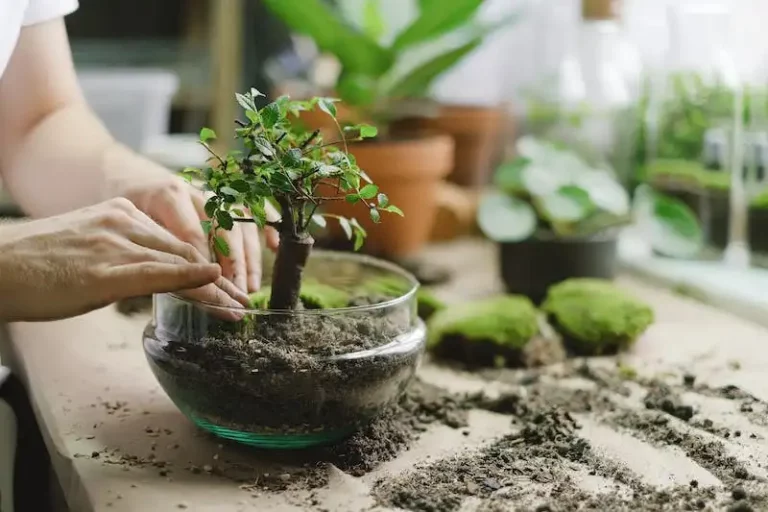Morning glories are beautiful flowering plants that are commonly grown in gardens and can add a touch of color and charm to any outdoor space. These plants are known for their characteristics, such as their showy flowers and the ability to self-seed and spread themselves—or, alternatively, they can be easily controlled and kept in check by thinning them out.
One of the main differences between morning glories and other plants is the way they open in the morning and close in the evening. This unique behavior adds to their charm and makes them a favorite among many gardeners. Morning glories come in a wide variety of colors, including vibrant pink, and they can easily be grown from seed.
When planting morning glories, it is important to follow instructions carefully, as these plants have specific needs. They prefer a sunny location and should be watered thoroughly, but less frequently. Fertilizing morning glories is not necessary, as they are relatively low-maintenance plants. However, if you choose to use fertilizer, an old-fashioned, readily available variety can be used.
Another consideration when growing morning glories is their potential invasiveness. These plants have the ability to self-seed and can quickly spread in a garden if not properly controlled. To prevent this, it is recommended to thin out the plants regularly and remove any unwanted seedlings. Keep in mind that morning glories can be toxic if ingested, so it is important to keep them away from children and pets.
In conclusion, morning glories are beautiful and easy-to-grow plants that can add a touch of beauty to any garden. Whether you choose the traditional blue variety or opt for something more unique, like the variegated purpurea, morning glories are sure to impress with their vibrant colors and charming characteristics.
How to Grow Morning Glories and Keep Them Under Control
Morning glories (Ipomoea), with their showy, colorful flowers and vining nature, are a favorite among many gardeners. These fast-growing plants can cover trellises–in less than a summer! If growing morning glories, however, it’s important to take care and keep them under control, as they have a tendency to be invasive at nature.
Here are some basic tips to help you grow morning glories successfully and prevent them from becoming a nuisance:
1. Choose the right variety: There are many different varieties of morning glories available, so try something like the Ipomoea tricolor ‘Heavenly Blue’ or ‘Grandpa Otts’ to add a splash of color to your gardens.
2. Provide a fertile and well-draining soil: Morning glories prefer fertile soil, so amend your soil with organic matter before planting. They also require good drainage to prevent issues such as root rot.
3. Start seeds directly in the ground: Morning glories are easy to grow from seeds, so plant them directly in the ground after the danger of frost has passed. Soak the seeds in water overnight before planting to help with germination.
4. Plant in a sunny location: Morning glories thrive in full sun, so choose a spot in your garden that receives at least 6-8 hours of direct sunlight per day.
5. Provide support: Morning glories are climbers, so provide a trellis or other support structure for them to climb. This will not only help them grow, but also prevent them from spreading too much.
6. Water regularly: Morning glories appreciate regular watering, especially during dry spells. Water deeply and thoroughly, making sure the soil is evenly moist. Avoid overhead watering to prevent diseases.
7. Keep an eye out for pests: Morning glories are generally pest-resistant, but they can be attractive to aphids, spider mites, and caterpillars. Regularly inspect your plants and use organic pest control methods if necessary.
8. Control their growth: Morning glories can be vigorous growers and spread easily, so it’s important to keep them under control. Regularly prune them back to prevent them from taking over other plants in your garden.
9. Beware of their toxicity: While morning glories are beautiful, they are also toxic if ingested. Keep them away from children and pets to avoid any potential health issues.
10. Harvest seeds carefully: Morning glories can reseed themselves, so if you want to collect seeds for propagating, do so carefully. Harvest the seed pods before they fully mature and dry them thoroughly before storing.
By following these tips, you can enjoy the beauty of morning glories in your garden while keeping them under control. Just remember to be careful with their invasive nature and toxicity, and enjoy the stunning display of flowers they provide.
Source: www.bhg.com
Even the most amateur gardeners can cover themselves–or at least their trellises–in glory by growing showy morning glories
Nature has provided us with a stunningly beautiful plant known as morning glories. These plants are easy to grow, making them a popular choice for both experienced gardeners and beginners. The production of vibrant and colorful flowers is a highlight of morning glories. When planted in the right conditions, morning glories can cover trellises, fences, and other structures, adding a touch of natural beauty to any landscape.
The characteristics of morning glories include its evening blooming, heart-shaped leaves, and fast-growing nature. Morning glories grow easily from seeds, which should be started in late June or early July to ensure ample sunlight and warmth. The seeds of morning glories readily germinate and will grow quickly, covering a wide area in a short amount of time.
To keep morning glories thriving, it is important to provide them with enough sunlight and water. These plants prefer full sunlight for most of the day, although they can tolerate some shade. Morning glories also require regular watering, especially during dry periods. However, be careful not to overwater as excessive moisture can lead to root rot.
Amendments and fertilizer can be used to control the growth and color of morning glories. Adding phosphorus to the soil can enhance the color of the flowers, while nitrogen can encourage leafy growth. It is important to follow the instructions on the fertilizer packaging and not to apply too much, as excessive fertilization can harm the plants.
Morning glories come in a variety of colors and sizes, allowing gardeners to choose the perfect variety for their gardens. Some varieties may reach a height and spread of several feet, while others are more compact and suitable for smaller spaces. The vibrant colors and whimsical shape of the flowers make morning glories a popular addition to any garden.
Although morning glories are generally non-toxic, it is important to be aware of their potential toxicity. Some people may be allergic to the pollen or sap of morning glories, so it is advisable to wear gloves when handling these plants.
For those who are looking to add some natural beauty to their landscape, morning glories are an excellent choice. With their fast-growing and showy nature, morning glories can easily cover trellises and other structures, creating a stunning display of color. Whether you are an experienced gardener or an amateur, morning glories are a great addition to any garden.
To grow morning glories successfully, consider the following tips:
- Choose a sunny location for planting.
- Prepare the soil by adding organic matter and loosening it for better drainage.
- Start the seeds indoors or directly sow them in the garden after the last frost.
- Water regularly, especially during dry periods.
- Provide support such as a trellis or fence for the plants to climb.
- Be mindful of the height and spread of the variety you choose.
- Watch for potential pests such as aphids or spider mites and take appropriate measures to control them.
- Enjoy the beautiful blooms and the joy they bring to your garden.
Growing Morning Glory at a Glance
Morning glories are colorful annuals that are easy to grow and add beauty to any landscape. These plants are typically planted in late spring or early summer when temperatures are warm enough for them to germinate and thrive. Morning glories are native to the Americas and include a variety of species, the most common of which is Ipomoea purpurea.
When planting morning glories, it’s important to find a sunny spot with well-drained, fertile soil. These plants do best in full sun but can tolerate some afternoon shade. The heart-shaped leaves and showy flowers make morning glories a popular choice for gardens and yard borders.
Seeds are readily available and can be planted directly in the ground or started indoors before transferring them outside. If planting directly in the ground, simply sow the seeds according to the instructions on the packet and keep the soil moist until germination occurs. If starting indoors, plant the seeds in pots and transplant them outside once the danger of frost has passed.
Morning glories have the potential to grow very quickly and can easily overrun a garden, so it’s important to keep them under control. Regular pruning and fertilizing will help to keep the plants in check and promote more flowers. Morning glories are also known for being self-seeding, so you may find new plants popping up the following year without any effort on your part.
It’s worth noting that morning glories can be toxic if ingested, so it’s important to keep them out of reach of children and pets. While they are generally considered non-toxic for humans, it’s always best to err on the side of caution.
There are many varieties of morning glories available, each with its own unique characteristics. Some of the more popular varieties include the old-fashioned Grandpa Otts, which has deep purple flowers, and the Heavenly Blue variety, which produces beautiful blue blooms.
In conclusion, morning glories are a beautiful and easy-to-grow plant that can add a touch of color to any landscape. Whether you are a beginner gardener or an experienced plant enthusiast, morning glories are sure to be a welcome addition to your garden.
Image credit: Pixabay




